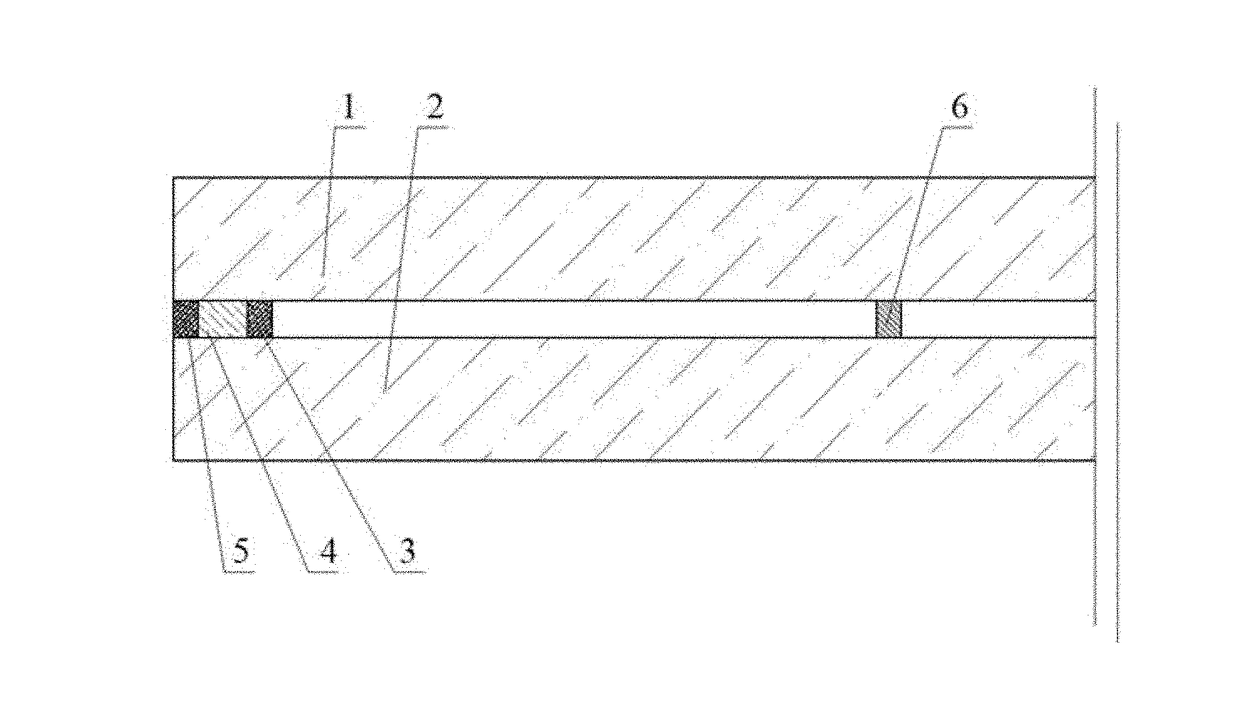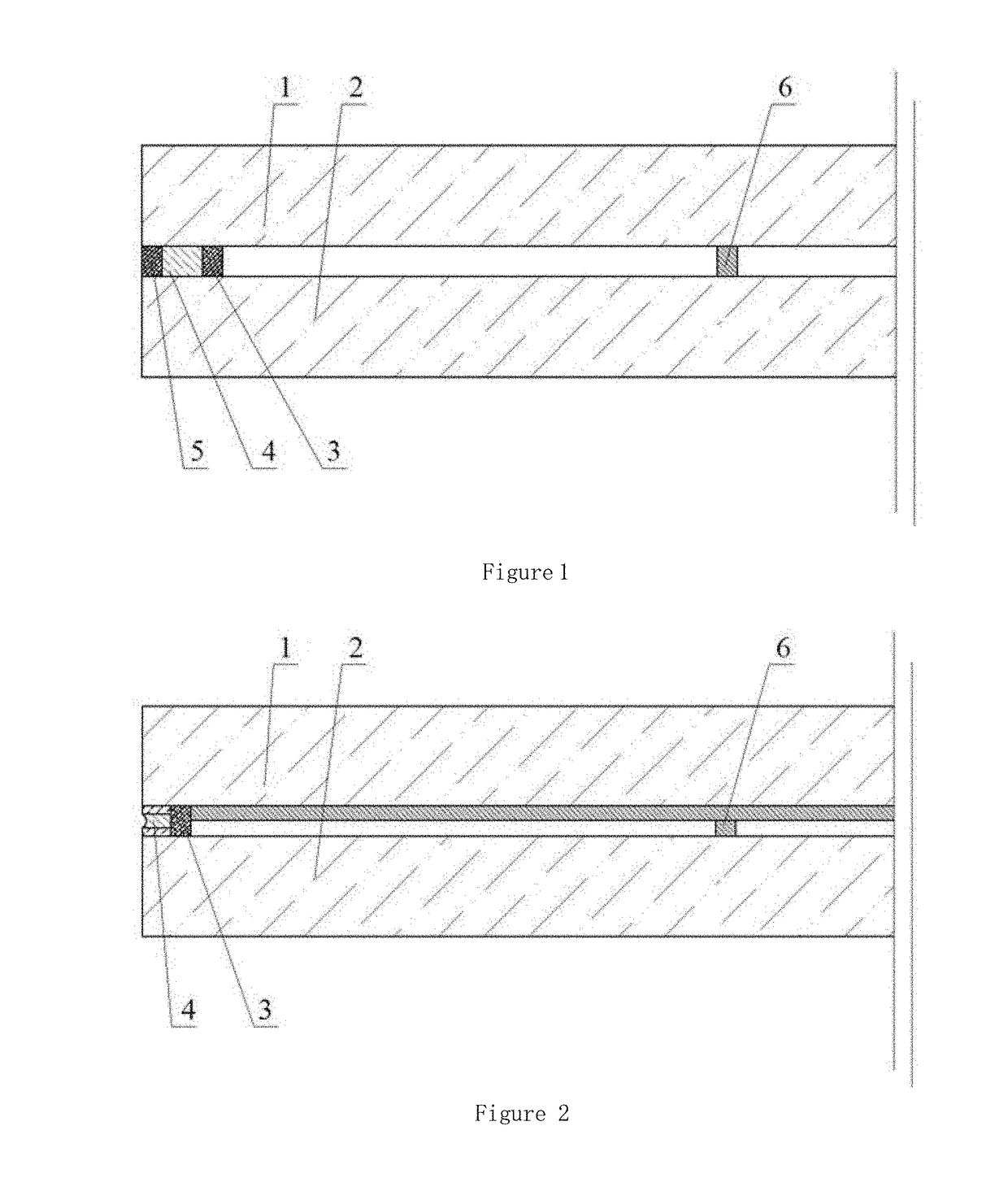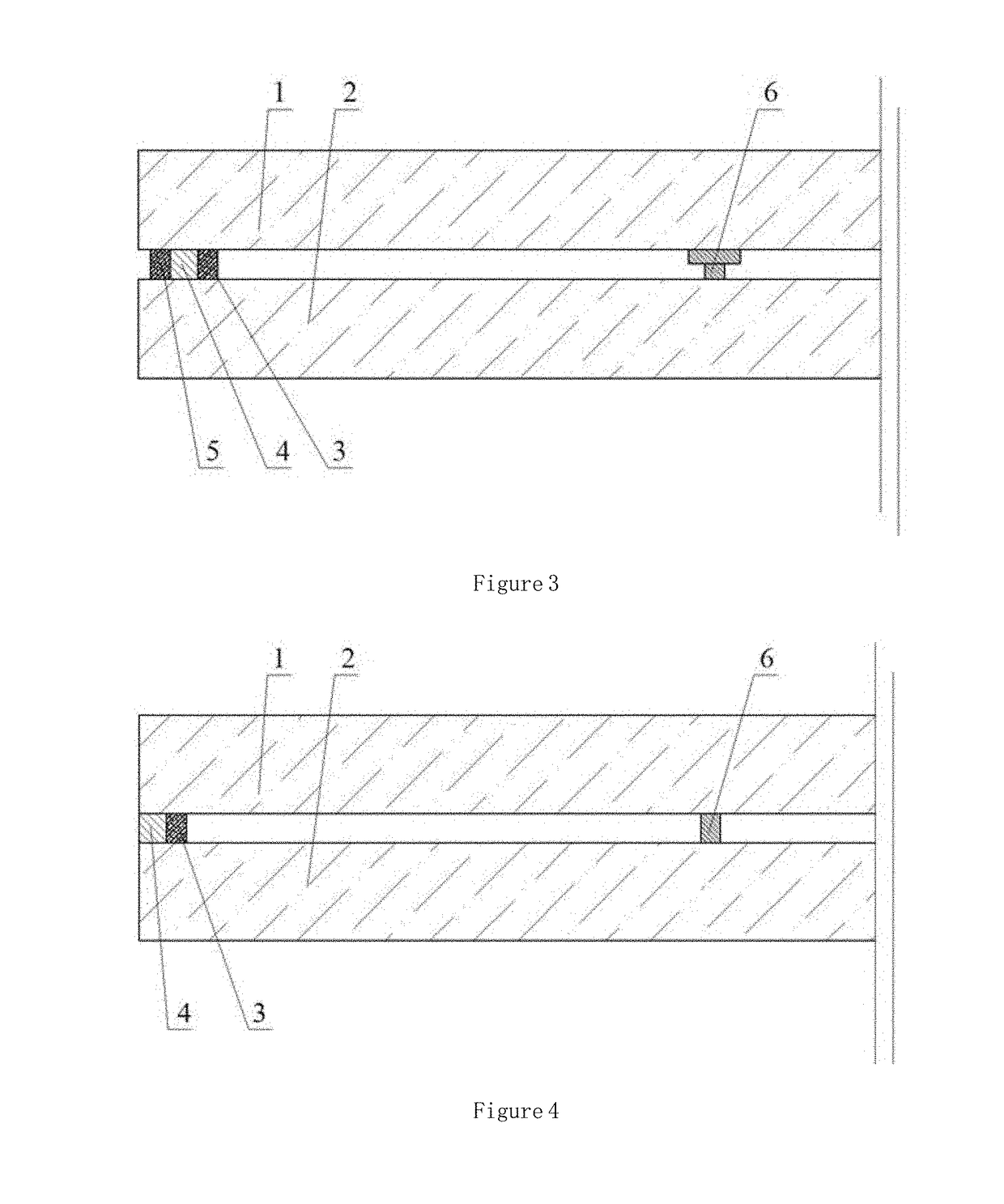Vacuum glass and manufacturing method therefor
- Summary
- Abstract
- Description
- Claims
- Application Information
AI Technical Summary
Benefits of technology
Problems solved by technology
Method used
Image
Examples
example 1
[0144]As shown in FIG. 1, vacuum glass comprises composite sealing material and two pieces of tempered glass, one of which is a piece of low emissivity glass. The vacuum glass is manufactured as follows: firstly, cutting and acquiring a piece of flat glass and a piece of low emissivity glass both having dimensions corresponding to a desired shape and size of vacuum glass, and grinding, chamfering, washing, and drying the two pieces of glass; secondly, disposing cylindrical supports 6 on the upper glass 1 or the lower glass 2 using tempered glass ink and a glue dispenser, putting the two pieces of glass into a tempered furnace where the supports are sintered on the glass; mechanically grinding the sintered supports 6 to flatten the tops thereof, and then rounding top edges of the supports 6 so as to eliminate the stress; uniformly coating one layer of low temperature glass solder and two layers of silicone adhesive on the periphery of one or two pieces of the glass using a coating ma...
example 2
[0148]As shown in FIG. 2, a flat vacuum glass comprises two sealing layers and two pieces of tempered glass, one of which is a piece of low emissivity glass. The vacuum glass comprises a piece of upper glass 1, a piece of lower glass 2, and a closed vacuum layer sandwiched between the upper glass 1 and the lower glass 2. The first sealing layer 3 is polyimide adhesive, the second sealing layer 4 is a metal solder, the peripheries of the two pieces of glass are welded using the first sealing layer of polyimide adhesive and the second sealing layer of the metal solder, a vacuum layer is disposed between the two pieces of the glass. The vacuum glass is manufactured as follows: firstly, cutting and acquiring two pieces of flat glass having dimensions corresponding to a desired shape and size of vacuum glass, and grinding, chamfering, washing, and drying the two pieces of glass; secondly, coating silver paste on the welding surface of the metal solder of the two pieces of glass, putting ...
example 3
[0151]As shown in FIG. 3, a flat vacuum glass comprises three layers of sealing material and two pieces of tempered glass, one of which is a piece of low emissivity glass. The vacuum glass is manufactured as follows: firstly, cutting and acquiring a piece of flat glass and a piece of low emissivity glass both having dimensions corresponding to a desired shape and size of vacuum glass, and grinding, chamfering, washing, and drying the two pieces of glass; secondly, disposing strip supports 6 on the two pieces of glass using tempered glass ink and a glue dispenser, putting the two pieces of glass into a tempered furnace where the supports are sintered on the glass; mechanically grinding the sintered supports 6 to flatten the tops thereof, and then rounding top edges of the supports so as to eliminate the stress; uniformly coating two layers of low temperature glass solder and one layer of magnesium alloy powders on the periphery of one or two pieces of the glass using a coating machin...
PUM
| Property | Measurement | Unit |
|---|---|---|
| Pressure | aaaaa | aaaaa |
| Temperature | aaaaa | aaaaa |
| Shape | aaaaa | aaaaa |
Abstract
Description
Claims
Application Information
 Login to View More
Login to View More - R&D
- Intellectual Property
- Life Sciences
- Materials
- Tech Scout
- Unparalleled Data Quality
- Higher Quality Content
- 60% Fewer Hallucinations
Browse by: Latest US Patents, China's latest patents, Technical Efficacy Thesaurus, Application Domain, Technology Topic, Popular Technical Reports.
© 2025 PatSnap. All rights reserved.Legal|Privacy policy|Modern Slavery Act Transparency Statement|Sitemap|About US| Contact US: help@patsnap.com



